I know I said that my next Sinners essay would be about Grace, and that essay soon come. But the Met Gala theme—Superfine: Tailoring Black Style— has me thinking about the legendary Ruth E. Carter’s magnificent costume design, to the point that I kept waking up to write notes about it, so here we are. To keep it (relatively) brief and particularly relevant to Black dandyism, I’m going to just focus on the Smokestack twins and their gorgeous suits. Because both of these men can’t help but be noticed, and both of them are making loud statements with every stitch on them.
We’ll take it from head to toe, starting with those hats.
Stack has his burgundy fedora with a wide brim, cut to take up space. Fedoras have a glamourous connotation with gangsters—when worn with the right swag, you think of big money mafia men like Al Capone when you see them. (When worn with zero swag, you just think of “milady”-ass Redditors.) Smoke’s wearing a bright blue flat cap, aka a newsboy cap. Still some gangster connotations here, but much more working-class. Think Peaky Blinders. So right from the top, these men are announcing their differing but connected worldviews. They’re both about that paper, and willing to do illegal things to get it. But Smoke takes pride in the labour, while Stack finds joy in the luxury.
Next up: the suits. Smoke is wearing a heavy houndstooth tweed, and I know he must be boiling in that Delta heat. To Annie’s point, Chicago isn’t done with him yet—he doesn’t seem like a man who even owns a summer-weight suit. Tweed is a bit rougher to the touch, and it holds its shape well; it’s meant to be sturdy, to withstand stress and strain. He really does look like a Peaky Blinder, which makes sense, given that the twins have cases of stolen Irish beer1 for their juke joint.
And Stack really looks like an Italian mobster with his lightweight pinstriped wool—presumably he’s the one furnishing the juke with the stolen Italian wine. Pinstripes, just like fedoras, connote glamour and wealth. They’re showy where houndstooth is serious. Unlike Smoke, Stack is enjoying playing dress-up.
Both twins are in three-piece suits, though the buttons on Smoke’s vest are pulling slightly. His suit is cut tighter than Stack’s overall, emphasizing his physical strength. Makes sense for a man who believes that the only thing that moves the world is power. We also learn that he’s wearing a mojo bag from his partner, Annie, but it’s hidden from view because the V of his vest is cut high. Stack has a lower V, being the more emotionally demonstrative one; and his suit is cut wider—again, taking up space. He also has a jaunty pocket square to match his tie, where Smoke, with his buttoned-up emotions, has two buttoned breast pockets.
What they’re wearing underneath their suits is what gave me a deep nerdy thrill. Because Smoke is wearing a detachable stiff collar, an item that had fallen out of style by the mid-1920s. See, detachable white collars had been the norm since the 1830s. Collars are the part of the shirt that need the most frequent laundering, so being able to switch them out saved on time and money.
Around WWI, shirts and their collars became much softer, in part as a rebellion against the stuffiness of the pre-war era. Mind you, this is happening at the same time that women’s skirts were getting shorter and laced corsets were also falling out of style. Soft collars were basically athleisure, signifying a preference for comfort over formality. And more old-fashioned, conservative men like Smoke disdained them, just like more conservative2 dressers disdain athleisure. Smoke, a soldier, is more at ease with discomfort; there’s a stability and predictability that comes with dressing the way you’ve always dressed, and with honouring tradition in that way.
So of course Stack is wearing, not just a soft collar, but a collar that is not detachable. He likes ease, he likes comfort, and he likes spending money on his clothes. Paying more to wash his shirts frequently feels like freedom to him, the way saving money for the future feels like freedom to Smoke.
And when we talk about spending money on clothes, we have to talk about Stack’s jewelry. The gold grill is the most eye-popping and defiant—flashing a grill to a suspected Klansman is a hell of a move for a young Black man in the Delta to make. But he also has his collar pin, his tie bar, his button chain, and his pinky ring. This boy is dripped. DOWN.
Meanwhile, his twin is wearing no such jewelry. Smoke doesn’t wear anything that isn’t functional and necessary, so the fact that Annie’s mojo bag is on his list is such a testament to how much he loves her, even though he doesn’t believe in hoodoo himself.
So, once you’ve put all of these sartorial elements together, they knit perfectly with each twin’s role in the story. It makes perfect sense that Stack is the one who sweet talks people with promises of big payouts and big fun, and Smoke is the one who negotiates pay with everyone, including a child. It makes perfect sense that a man so devoted to providing as Smoke is would attract a nurturer who doesn’t otherwise have someone taking care of her, and who wears a corset to boot.
Just as it makes perfect sense that a man who exudes comfort and defiant self-regard the way Stack does would attract a foul-mouthed woman who longs to feel comfortable in her own skin, and who wears the most eye-catchingly moneyed outfits in the whole picture.
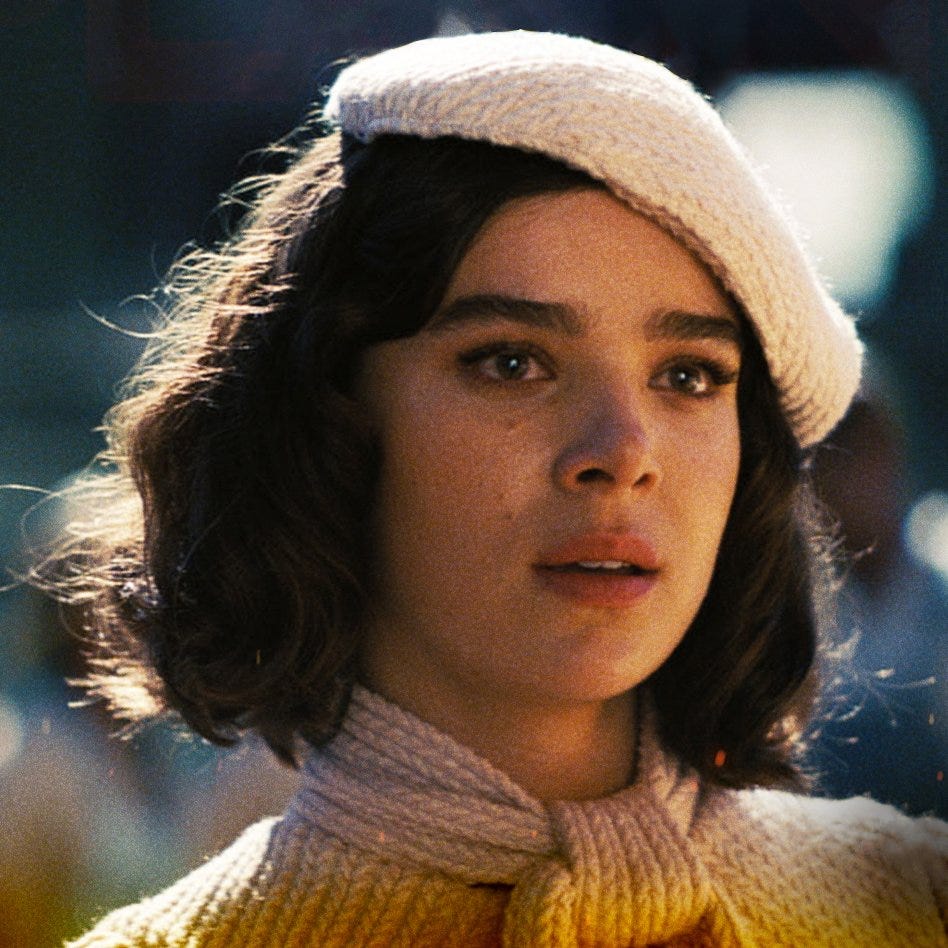
And it makes brutal, tragic sense that both twins would run afoul of the lie that money would buy them the true freedom they both yearn for, in a world determined to deny it to them.
I’m very aware there’s a difference between English and Irish!
This is a lower-case c conservative; we’re talking culture, not politics.




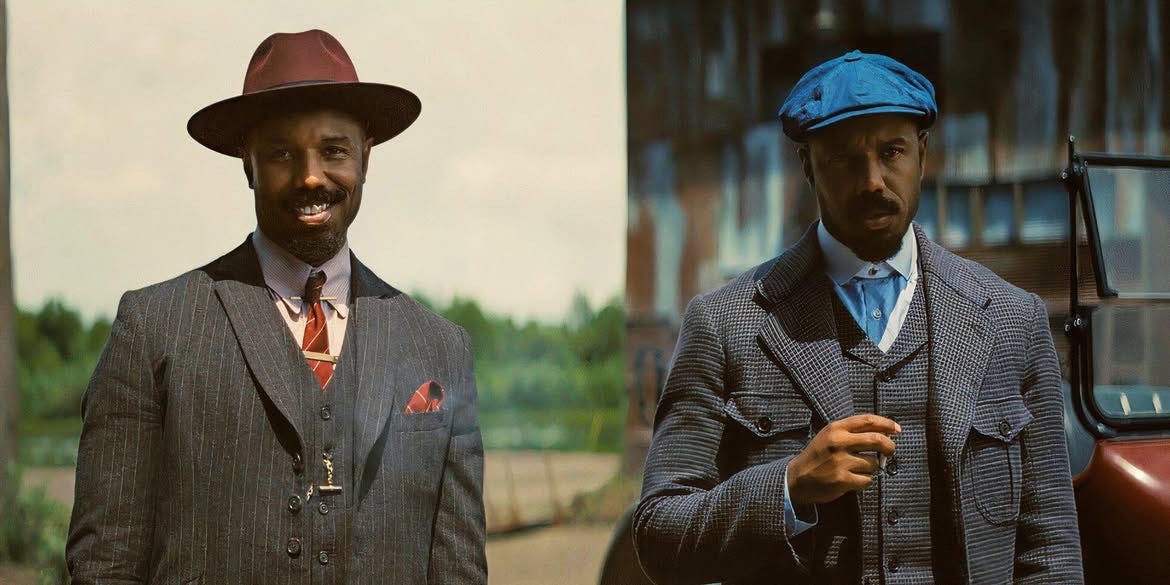
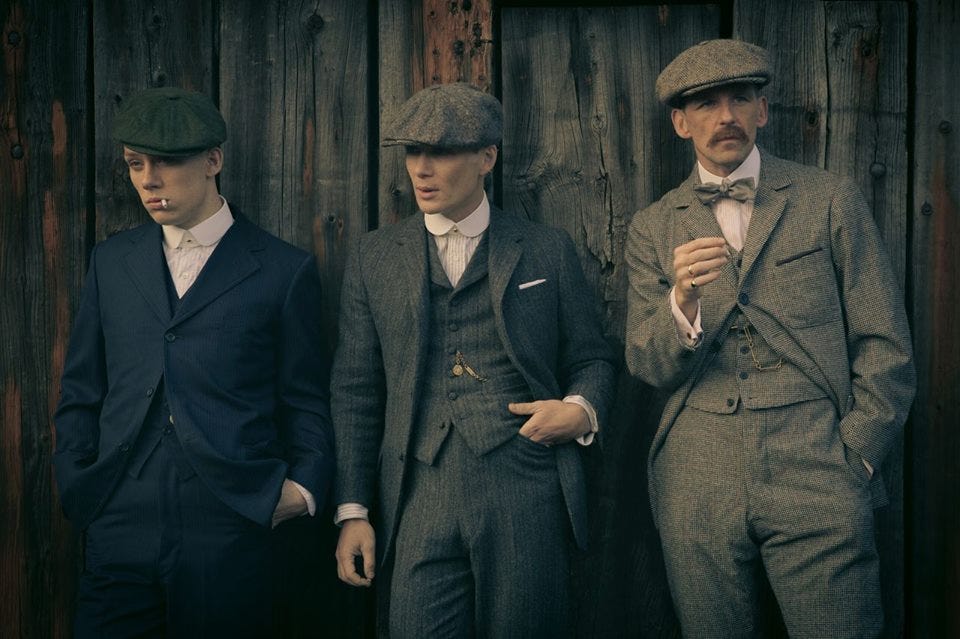

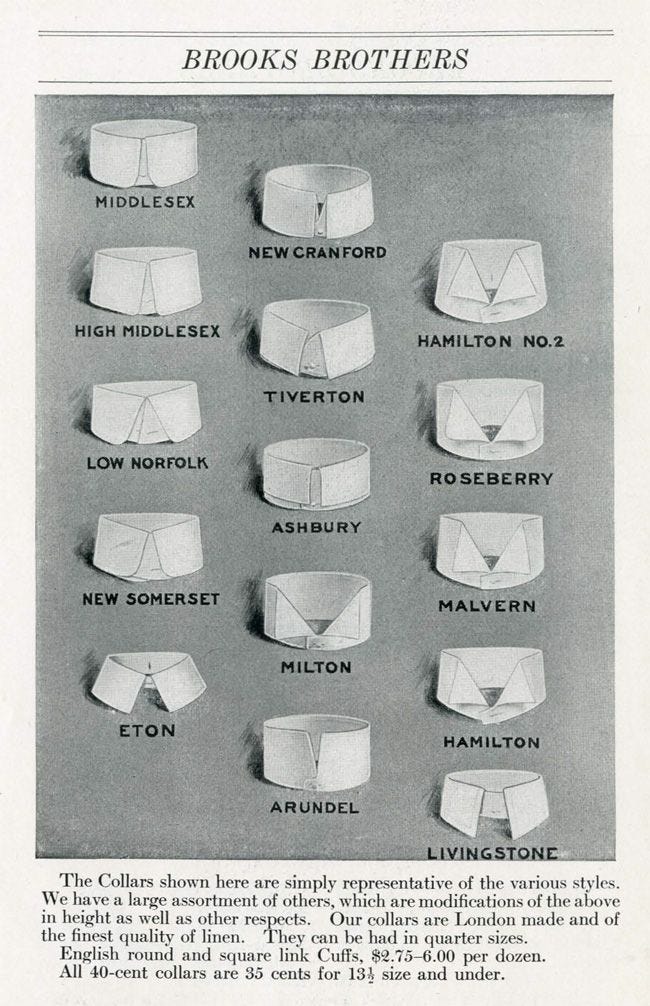

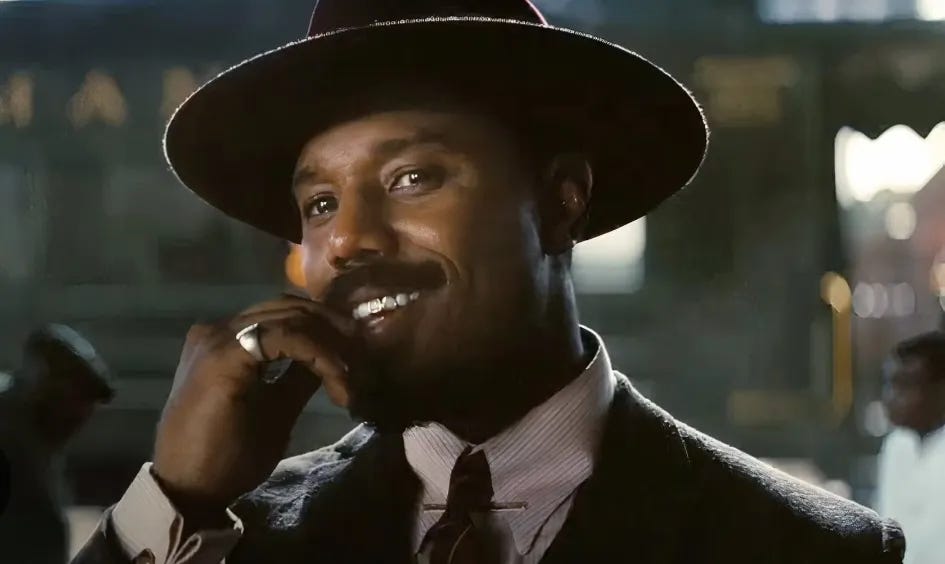


"'milady'-ass Redditors" hahaha
Just read a Ruth Carter interview and, as always, you are spot on:
“[Stack’s] His character is very self-conscious and plans] every little detail; on his pants, the pockets are slanted, he's got the collar bar, the tie bar, the cuff links— he's got everything.”
And then "Smoke is less conscious. He doesn't have a tie, he represents the everyman, and his suit was a little more boxy, a little bigger, and a little less tailored because he's hiding all kinds of stuff; he's got two guns, he's got a knife. His look reminds me of Don Cheadle in Devil in a Blue Dress. He'll take you down in a second. I loved his blue hat, too, because it was made of denim and was meant to represent workwear.”